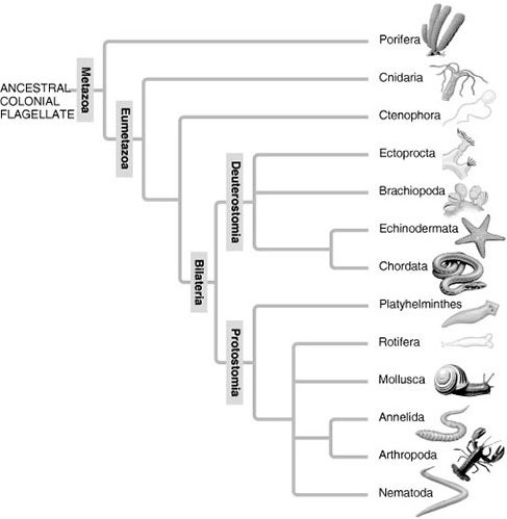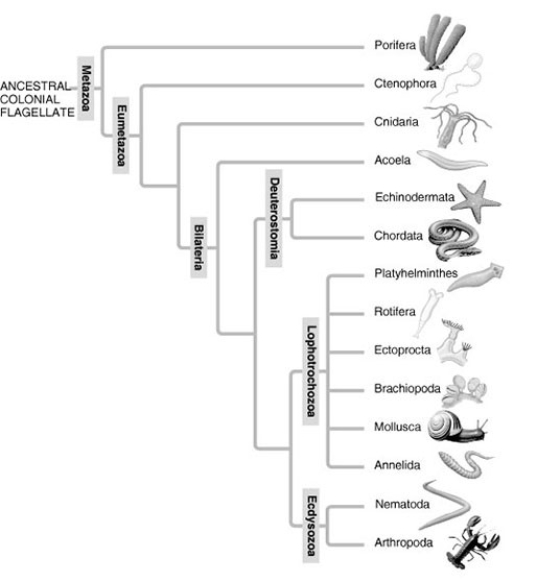Multiple Choice
A: Morphological phylogeny. 
B: Molecular phylogeny. 
In the traditional phylogeny (A) , the phylum Platyhelminthes is depicted as a sister taxon to the rest of the protostome phyla and as having diverged earlier from the lineage that led to the rest of the protostomes. In the molecular phylogeny (B) , Platyhelminthes is depicted as a Lophotrochozoan phylum. What probably led to this change?
A) Platyhelminthes ceased to be recognised as true protostomes.
B) The removal of the acoel flatworms (Acoela) from the Platyhelminthes allowed the remaining flatworms to be a monophyletic clade clearly tied to the Lophotrochozoa.
C) All Platyhelminthes must have a well-developed lophophore as their feeding apparatus.
D) Platyhelminthes' close genetic ties to the arthropods became clear as their Hox gene sequences were studied.
Correct Answer:

Verified
Correct Answer:
Verified
Q3: Sponges and ctenophores have both been proposed
Q4: Use the information to answer the question.<br>One
Q7: What do animals ranging from corals to
Q10: You have before you a living organism,
Q11: In examining an unknown animal species during
Q20: What was an early selective advantage of
Q22: Among protostomes, which morphological trait has shown
Q44: An organism that exhibits a head with
Q53: In the future, phylogenetic studies should be
Q54: If in the future the current molecular